1. Umbrella nibbling - The Oval, 1902

Set 263 to win on the final day, England were expected to prevail. An hour later they were 48-5 with all their batsmen gone. Out strode Gilbert Jessop. Gilbert was an all-rounder in all senses of the word. He was the sort of sportsman you never get these days. He played competitive football, hockey, rugby, golf, and represented England as a sprinter as he could run 100 yards in ten seconds. At cricket he bowled fast, was the best fielder in the country, and scored his runs faster than anyone in history.
That day he scored 104 in 77 minutes, which in terms of time is still the fastest ever test hundred and it inspired England to sneak home by 1 wicket. The report on the ending said that it was so exciting one gentleman died of a heart attack and another chewed the top off his umbrella.
2. Bodyline - 1932

No phrase in the history of sport has such resonance as the word, Bodyline. England went out to Australia to play a formidable team that included Donald Bradman, the greatest batsman of all time. The captain Douglas Jardine devised a scheme to curtail him, which in essence involved cheating. He told his best fast bowler Harold Larwood to not bowl at the stumps but to effectively bowl at the batsman.
The idea was more complex than that, but the result was a player would have to devote all his time to defending himself rather than playing because if he missed the ball, then he would get hit and seriously hurt. This was outside the spirit of the game and when players starting getting smashed in the face by 95 mph balls the resulting furore caused the most severe diplomatic incident that century between Australia and England. When you add to the mix that Jardine was posh and Larwood was a working-class bloke you have a recipe for one of the great sporting yarns.
3. Eric Hollies, The Oval 1948

This match was Don Bradman's final appearance. In terms of statistics Bradman was the greatest ever cricketer. He could also claim to be the greatest sportsman ever. Forget Tiger Woods. To be like Bradman a golfer would have to go round in 50 every single time. He was that far ahead of the others. In cricket an average of 40 means you're a good player, 50 means you're a great one, 60 is out of reach. The best player in current cricket averages 57.
Bradman walked out for his last match averaging 101. He needed 4 runs to retire with an average of over 100. Eric Hollies, a journeyman player who had done little before and did nothing after was bowling. The crowd cheered Bradman all the way to the wicket. Then Hollies turned his arm over and bowled Bradman out for a duck. The crowd looked on in horror, and yet he had to go and so his career ended with an average of 99.94.
4. Laker's match - Old Trafford 1956

The most wickets any player in any form of cricket has ever taken in a match is 17. In this match Laker took 19. When he got home his wife asked him if anything important had happened that day as the phone had been ringing a lot.
5. What a picture - The Oval 1967

Although the above picture had been cropped and so doesn't quite capture the moment, the large version is my favourite sporting picture. Australia turned up for the final day needing to bat out the match for a draw. A large crowd arrived to see if they could and instead spent the day watching the rain fall. By mid-afternoon ducks were swimming around the outfield. The rain stopped, but there was no chance of play.
Then in a scene that couldn’t for health and safety reasons be allowed today the crowd invaded the pitch and started mopping up. They did so well that play was possible for the last hour of the day. Luckily England had Deadly Derek Underwood playing, and on a damp pitch he was unplayable. He ran through the last players to leave the last two batsman at the crease. With tension mounting as there was only a few minutes left and every fielder crowding the bat, he delivered another fizzing ball and trapped Inverarity leg before.
6. Granddad gets to play - Lord's 1975

In 1974 Austrialia had destroyed England with the help of Lillee and Thompson, one of the most charismatic bowling duos of all time. Lillee had a comical moustache and was clever and resourceful, Thompson was a brute and possibly the fastest there's ever been. They beat England 4-1 and broke even more bones. Nobody could stand up to them and so for the return series the selectors searched for someone who had the guts to face the intimidatory bowling. They chose David Steele. Cricketing fans responded with - who? And when they found out who he was they responded with - why? Steele played for a second rate county where he couldn’t hold down a first team place as he averaged around 30. He was also in his mid-30s, an age when most players retired.
It was a bizarre selection, which became even more bizarre when he came out to bat and everyone got their first sight of him. He wore pebble-glasses and had gone completely grey, making him look like a retired bank manager. Lillee is supposed to have said, "Streth, mate, they've sent out someone's granddad to play against us." Lillee decided to end the nonsense and hurled a 95 mph ball at his head. Steele didn't flinch. He just steered the ball away for four and a folk-hero was born. He was Steele by name and steel by nature and England rediscovered their pride and went on to draw a few matches.
7. Local hero runs off - Trent Bridge 1977

Derek Randall was the local boy made good. Playing for the unfashionable county of Nottinghamshire he'd managed to get in the England team and so when England played Australia at Notts' home ground everyone wanted to see how he'd do. What made the moment even greater was that Randall was a character; the sort of person that again you don’t get in sport these days. He was scruffy, fidgety, and a joker. When Lillee hit him on the head and knocked him over in 1976 his response was that at least you didn't hit me anywhere important.
Returning for the match was Geoffrey Boycott, a divisive figure who was the best player in the country and yet who had retired from internationals when Mike Denness got the captaincy ahead of him. When Denness retired Boycott came out of retirement and so the scene was set for one of cricket's most memorable bits of bad play.
Randall and Boycott found themselves batting together. Boycott was doing his usual trick of defending the first 5 balls then sneaking a single off the last ball to keep the strike. He'd done this for a few overs and then he tried to get a run even when he'd hit the ball straight to the fielder. He set off for a suicidal run. Randall shouted no. Boycott kept going. Randall turned his back on him. Boycott kept going, and so they both found themselves at the same end and Randall was run out. The crowd were not impressed. I was there that day and I uttered a rude word, loudly. It didn't matter as 15,000 others did too.
8. Headingley - 1981

The date and venue has come to mean the impossible comeback. I doubt any side in any sport has ever been so behind and yet gone on to win. It would be like being 5-0 down with two minutes to play in football, you’re down to 6 men and you've lost the ball, and still winning. Or simply put, if this was a sporting movie, Kevin Costner would be in it.
England had just been stuffed 5-0 in a 5 match series dogged by tales of the side spending too much time partying. The press and fans were sharpening their knives when they arrived home to play Australia. They were promptly beaten in the first match. Then the captain got sacked midway through the second match and he had a punch-up with a spectator on the way to the wicket in a rain-affected draw. So things were looking very bad before they arrived at Headingley, and then they got worse.
England watched Australia compile 401. Then they got out for 185 and were invited to bat again. By tea on the fourth day they were 135-7 and in a hopeless position. By all accounts Ian Botham, realizing his career was over, got drunk to fortify himself before getting torn apart by the press, and so started playing like an idiot. He did everything a player shouldn’t do and yet he got lucky. For the next two hours he blasted a breathless 146. Even so that set Australia only 130 to win, a simple enough target and yet the next day chilled out Bob Dylan fan Bob Willis suddenly got angry and took 8 wickets. England scraped home to victory and a legend was born.
9. Boon's record - 1989

After Headingley Australia disappeared into the doldrums for the rest of the decade. But the team who came out in 1989 were determined to reverse their fortunes, and there was no better way to prove they meant business than for David Boon to beat the world record for the most beer consumed on the flight from Australia to England. The record had been set by Doug Walters on the 1975 tour at 44 cans. Australian cricket fans had argued passionately on the subject of whether Rodney Marsh managed to beat the record for the 1977 tour with 45 cans, but it's thought the last one might have been an in and outer and he only equalled the record.
David rewrote the record book with 52 cans of lager. Australia went on to win the cricket too.
10. That ball - Old Trafford 1993

A young bloke called Shane Warne came on to bowl his first ball in England to Mike Gatting. Rumour had it that Warne might become fairly good. Most doubted it. He came trundling in off a few paces and bowled a fairly uninteresting looking warm-up delivery that drifted in towards the batsman's legs. Gatting placed his bat in the way. And then it happened. The ball pitched then impossibly turned at a right-angle and clipped the stumps. Cricket suffered a seismic shift. The delivery was called the ball of the century. And Warne faded away into obscurity... well, not quite.
So will the current series produce great moment number 11? It’s hard to say. Australia have a rare weak team at the moment while we have our usual weak team. My head says Australia will win easily, but my heart says that if we can avoid injuries, Ricky Ponting gets swine flu, and Pietersen remembers how to use a bat it will be 2-1 to England.

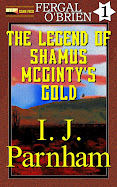
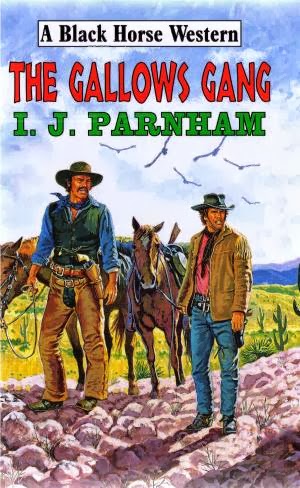
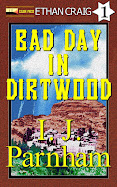



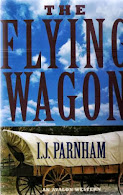
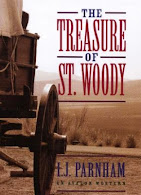

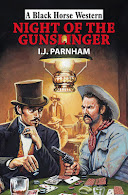
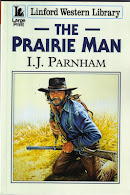







No comments:
Post a Comment